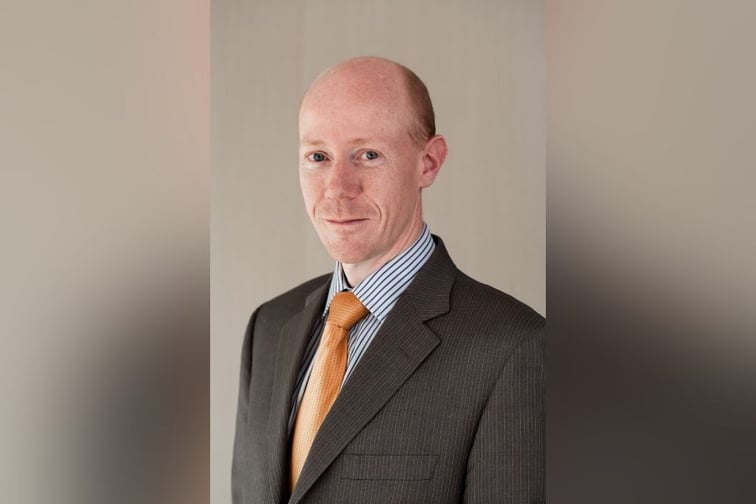

The flooding devastation across Australia’s east coast has underlined the gravity of the financial threats facing insurance companies from climate risks. David Howard-Jones (pictured), partner in Oliver Wyman’s Global Finance and Risk practice regards the bankruptcy of Pacific Gas and Electric Company (PG&E) in January 2019 as something of a wake-up call to businesses concerning the direct financial impacts of climate.
Read next: Electric company insurance
“This was the first, most public climate related bankruptcy, where Pacific Gas and Electric, a $70 billion company, collapsed entirely because of climate related risks,” he said.
Read more: Broker says flooding is worst he’s seen
PG&E was found liable, said Howard-Jones, for the bushfires that started in California because of sparking from its power lines. The class actions that followed successfully proved that the company hadn’t done enough to clear trees underneath the lines.
“The short version is they actually tried to do a lot of tree-clearing but they were in the world of deciding whether to spend tens of millions or hundreds of millions of dollars on tree clearing,” he said.
PG&E said it spent a very large amount, said Howard-Jones, but not an extraordinary amount.
“It turns out it takes an extraordinary amount of investment to really manage that risk,” he said.
The Insurance Council of Australia’s (ICA) latest estimate of claims damage costs from the recent floods is approaching $2 billion. Given how few businesses could afford to take out flood insurance the real cost of the flood damage is much higher.
“So, first of all, we know that climate and ESG issues are resulting in investors losing tens of billions of dollars - known fact - and it will get worse as the environment gets worse,” said Howard-Jones.
The way insurance companies deal with climate issues is entwined with ESG (Environmental, Social, Governance) indicators. ESG indicators are a way for investors to assess how companies are dealing with climate change and other factors that have recently increased in importance in relation to employee engagement and the composition of boards.
In recent months, ratings agencies have started to take more notice of ESG factors as an influence on their credit ratings. At the end of last year, S&P Global, one of the world’s biggest credit ratings agencies, released its first ever report detailing the ESG factors impacting insurers.
“It’s the first time we’ve put the indicators out there,” said S&P credit analyst, Craig Bennett, the main author of the ESG Credit Indicator Report Card: Asia-Pacific Insurance.
ESG metrics are not usually mandatory for financial reporting. However, according to the US-based CFA Institute, investors are increasingly applying these non-financial factors to identify where they want to put their money.
“It’s true that they [credit ratings agencies] are starting to put ESG-like metrics into their assessment. Currently it’s my understanding that they have a low direct weighting. But one would assume that over time that that weighting will be normalized,” said Howard-Jones.
He said some experts think the weighting will increase. In its ESG Credit Indicator Report Card: Asia-Pacific Insurance S&P reported that more than 80% of its ESG ratings are neutral. In other words, they have no impact on a company’s credit rating.
“The point is that climate is already demonstrably losing people money and evidently the rating agencies take it seriously,” said Howard-Jones.
There are different ways for insurance companies to consider the different ESG risks. One useful tool is risk barometers.
For example, in January, Allianz released its annual Risk Barometer for 2022. The Germany-based global financial services company ranks as one of the five largest insurance companies in the world and is one of the biggest operators in Australia. Allianz produces its report by considering the biggest risks facing businesses.
For Australia, the Allianz Risk Barometer identified business interruption (BI), cyber and climate change as the top business risks.
Read more: Allianz boss lifts lid on Risk Barometer
There’s also the the World Economic Forum’s (WEF) Global Risks Report 2022. That report is produced in collaboration with Marsh McLennan, Oliver Wyman’s parent company. Howard-Jones has been involved with the report since its first release 17 years ago. The WEF report considers risks from a wider perspective in terms of impacts on the global community including people, governments and business.
According to the WEF, climate action failure, extreme weather and biodiversity loss are the top three global risks facing the world over the next decade.
So which risk assessment is the one insurance companies need to take notice of?
“Different firms will take a different lens. Business interruption (BI), I think, has had particular focus through the pandemic. BI is obviously a big thing but it’s not the only risk feature that insurers face with these broad scale changes,” said Howard-Jones.
“The definition of a global risk is something which one actor, whether it’s an individual, an organization, or a country, cannot solve alone,” he said.
When Marsh McLennan started collaborating on these reports with the WEF, Howard-Jones said it was looking at ways of framing the risk issues that the world’s leaders should be thinking about as they gather for their meeting in Davos each January. They decided crowdsourcing was the best method.
“So we go to hundreds of leading thinkers around the world from government, academia, think tanks and businesses. We put in front of them 30 to 50 of what we call global risks,” he said.
Howard-Jones said the result is a list of the really big issues that need “massive policy [initiatives] and coordination to solve.” Like the threat to Australia and the world from catastrophes like flooding.
“So I think that in a world where there are some large uncertainties out there that’s going to affect how insurers decide to define their products and services in the future,” said Howard-Jones. “I’d say that the global risk report doesn’t give them an answer but I think that it points them to the questions they need to be facing into.”
